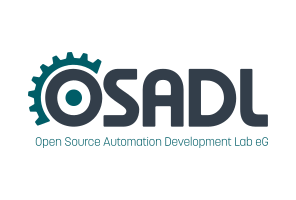Dates and Events:
|
OSADL Articles:
2023-11-12 12:00
Open Source License Obligations Checklists even better nowImport the checklists to other tools, create context diffs and merged lists
2022-07-11 12:00
Call for participation in phase #4 of Open Source OPC UA open62541 support projectLetter of Intent fulfills wish list from recent survey
2022-01-13 12:00
Phase #3 of OSADL project on OPC UA PubSub over TSN successfully completedAnother important milestone on the way to interoperable Open Source real-time Ethernet has been reached
2021-02-09 12:00
Open Source OPC UA PubSub over TSN project phase #3 launchedLetter of Intent with call for participation is now available |
Real Time Linux Workshops
1999 - 2000 - 2001 - 2002 - 2003 - 2004 - 2005 - 2006 - 2007 - 2008 - 2009 - 2010 - 2011 - 2012 - 2013 - 2014 - 2015
13th Real-Time Linux Workshop from October 20 to 22 at the Faculty of Electrical Engineering, Czech Technical University in Prague
Announcement - Hotels - Directions - Agenda - Paper Abstracts - Presentations - Registration - Abstract Submission - Sponsoring - Gallery
Performance Evaluation of openPOWERLINK
Yang Minqiang, Li Xuyuan, Zhou Qingguo, Nicholas Mc Guire
Lanzhou University, Lanzhou, P. R. China
In despite of various attempts to put field-bus on Ethernet, and Ethernet field-buses attracted more and more attention, the industrial deciders are still hesitating about the choice between the Ethernet variant. For the good features and performance of RT-PREEMPT, a soft PLC which consists of openPOWERLINK and RT-PREEMPT might be a cheap and easy solution for many deployed cases. In this paper, we would evaluate synchronism, jitter, cycle time and other most relevant indicators of openPOWERLINK over RT-PREEMPT. Distributed systems are used commonly to implement tightly coordinated controllers, data acquisition or synchronization. To allow evaluating such typical scenarios with inexpensive hardware we use the paraport to simulate the input/output of a PLC. This simple setup allows us to evaluate the capabilities of the overall setup including the hardware, OS and protocol stack - thus allowing to judge the capabilities of the setup for practical purposes and provide reference to the industrial people.




